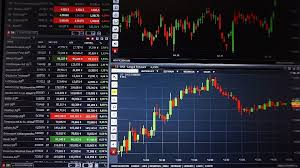
Forex trading, commonly referred to as foreign exchange trading, involves buying and selling currencies on the foreign exchange market with the aim of making a profit. This market is the largest and most liquid financial market in the world, where trillions of dollars are traded daily. Understanding the basics of forex trading is essential for anyone looking to enter this complex and dynamic field. To start your journey, you can visit forex trading basics https://forex-level.com/ for valuable resources and insights.
What is Forex Trading?
Forex trading is the act of exchanging one currency for another at an agreed price. Currencies are traded in pairs, such as EUR/USD, which represents the value of the euro against the US dollar. Forex trading takes place over-the-counter (OTC), meaning there is no centralized exchange; instead, transactions occur through a network of financial institutions and brokers.
The Mechanics of Forex Trading
The basic unit of forex trading is the currency pair, which consists of a base currency and a quote currency. The base currency is the first currency in the pair, while the quote currency is the second. The price of the currency pair represents how much of the quote currency is needed to purchase one unit of the base currency. For example, if the EUR/USD pair is trading at 1.20, it means 1 euro can be exchanged for 1.20 US dollars.
Understanding Pips and Lots
A pip, short for “percentage in point,” is the smallest price move that a given exchange rate can make based on market convention. In most currency pairs, a pip is typically the fourth decimal place (0.0001). The exception is currency pairs that involve the Japanese yen, where a pip is the second decimal place (0.01).
Lots refer to the number of currency units you trade. A standard lot in forex trading is 100,000 units of the base currency. There are also mini lots (10,000 units) and micro lots (1,000 units) available, allowing traders to control varying amounts of capital.

Market Participants
The forex market is made up of several participants, each playing a crucial role in the market’s dynamics:
- Central Banks: National banks influence their own currencies, setting interest rates and intervening in forex markets to stabilize their currencies.
- Commercial Banks: Major banks provide liquidity and facilitate the majority of forex trading for clients, institutions, and corporations.
- Retail Traders: Individual traders who participate in the market using online trading platforms to speculate on currency movements.
- Corporations: Businesses that engage in forex trading for commercial purposes, including paying for goods and services in foreign currencies.

Types of Forex Markets
Forex trading can be done in several types of markets:
- Spot Market: The most common type of forex market, where trades are executed immediately at the current market price.
- Forward Market: Contracts that allow traders to buy or sell a currency at a predetermined price on a future date.
- Futures Market: Similar to the forward market but traded on exchanges with standardized contract sizes and expiration dates.
Key Strategies for Forex Trading
There are several strategies you can employ to be successful in forex trading:
- Technical Analysis: Analyzing price charts and historical data to forecast future price movements based on patterns and trends.
- Fundamental Analysis: Evaluating economic indicators, news releases, and geopolitical events that may impact currency values.
- Sentiment Analysis: Gauging the overall mood of the market based on trader behavior and market trends.
Risk Management in Forex Trading
Effective risk management is crucial in forex trading, as it helps protect your capital and minimize potential losses. Some key risk management techniques include:
- Setting Stop-Loss Orders: A stop-loss order automatically closes a trade when the market reaches a specified level, limiting potential losses.
- Position Sizing: Determining the amount of capital to risk on each trade relative to your overall account size.
- Diversification: Avoiding putting all your eggs in one basket by spreading your investments across different currency pairs.
Emotional Discipline and Trading Psychology
Forex trading can be emotionally taxing, as it involves high stakes and rapid market changes. Therefore, maintaining emotional discipline and understanding trading psychology is essential. Successful traders recognize their emotions and learn to manage them, focusing on their trading plan rather than impulsive decisions.
Conclusion
Forex trading offers vast opportunities for profit, but it also involves significant risks. By understanding the basics of forex trading, including market mechanics, participants, strategies, and risk management, you will be better equipped to navigate this exciting financial landscape. Continuous learning and practice are key to developing successful trading skills. Always remember to start with a demo account before committing significant funds and to trade responsibly.

